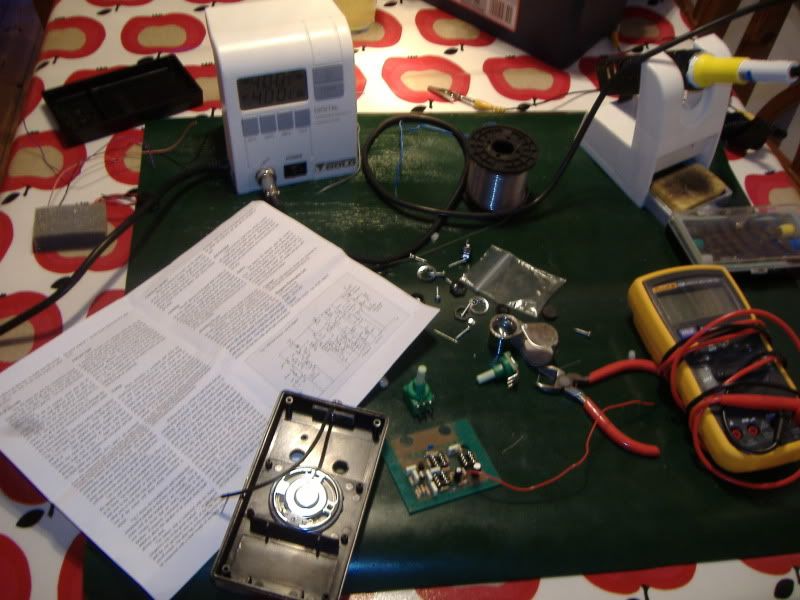A few weeks ago I took the family on a badger watch, organised by the excellent Scottish Wildlife Trust. Unfortunately, the badgers didn't perform, but on the walk back there were many bats around, and the Ranger demonstrated the use of the bat detector. I was quite impressed - you can identify species by the sound frequency used, and there are both echolocation calls and social calls. The kids were fascinated.
You can buy a bat detector for about £60 upwards, but I noticed that Magenta electronics sell a kit for £38.
http://www.magenta2000.co.uk/acatalog/Bat_Detector_Mk_2.html
It's a so called heterodyne detector - (non-geeks ignore this next bit) - it mixes the incoming frequency with a oscillator frequency that is, say, 2kHz lower. The product of the mixing process is then a 2kHz audio frequency that we can hear. In fact, the circuit is essentially a simple long wave radio receiver, with a microphone instead of an antenna.
(Non-geeks may switch on again). You need to solder about 40 components on to a printed circuit board. It is very straightforward for anyone who has done any electronic construction. I think it could be assembled by anybody who is prepared to research how to identify components and solder - there are plenty of net resources here. You'd need a soldering iron (£5-£10), solder, a screwdriver, wirecutters or scissors. A multimeter (£5) is useful but definitely not essential.
Construction under way:

Completed detector:

Electronic engineers know tht electronic devices only work because they contain smoke. If you let any of this smoke out, the device does not work any more, so the theory must be sound. It always makes applying power to a new project interesting.
Fortunately the Magenta detector worked first time. An evening walk revealed pipistrelles clicking away at 45kHz, and some other sounds at 20kHz that might be pipistrelle social calls, but I am not sure.
An interesting project, that certainly adds interest to walking at dusk.
You can buy a bat detector for about £60 upwards, but I noticed that Magenta electronics sell a kit for £38.
http://www.magenta2000.co.uk/acatalog/Bat_Detector_Mk_2.html
It's a so called heterodyne detector - (non-geeks ignore this next bit) - it mixes the incoming frequency with a oscillator frequency that is, say, 2kHz lower. The product of the mixing process is then a 2kHz audio frequency that we can hear. In fact, the circuit is essentially a simple long wave radio receiver, with a microphone instead of an antenna.
(Non-geeks may switch on again). You need to solder about 40 components on to a printed circuit board. It is very straightforward for anyone who has done any electronic construction. I think it could be assembled by anybody who is prepared to research how to identify components and solder - there are plenty of net resources here. You'd need a soldering iron (£5-£10), solder, a screwdriver, wirecutters or scissors. A multimeter (£5) is useful but definitely not essential.
Construction under way:

Completed detector:

Electronic engineers know tht electronic devices only work because they contain smoke. If you let any of this smoke out, the device does not work any more, so the theory must be sound. It always makes applying power to a new project interesting.
Fortunately the Magenta detector worked first time. An evening walk revealed pipistrelles clicking away at 45kHz, and some other sounds at 20kHz that might be pipistrelle social calls, but I am not sure.
An interesting project, that certainly adds interest to walking at dusk.
